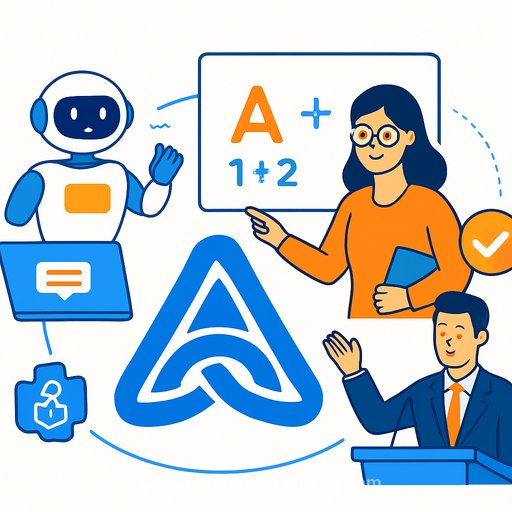AI That Students Actually Trust: Lessons Educators Can Use Now
A new study out of Dartmouth shows something most of us have been waiting to hear: students trust AI more when it's grounded in vetted course materials, not the open internet. That single design choice changed how learners engaged with an AI teaching assistant and how they felt about it.
The takeaway for educators is clear. Personalization at scale becomes viable when you reduce noise, flag reliability, and keep the system aligned with what you actually teach.
What Dartmouth Tested
In a Neuroscience and Neurology course, 190 medical students used NeuroBot TA, an AI assistant built with retrieval-augmented generation (RAG). Instead of guessing from broad training data, the bot pulled answers from curated sources: textbooks, lecture slides, and clinical guidelines.
It only answered questions it could support with those materials. No sourcing? No answer. Students overwhelmingly trusted this approach more than general chatbots.
Why Trust Spiked
RAG anchors responses to known references and reduces hallucinations. That creates a clear contract with students: answers come from the same material they're assessed on, not a random forum or outdated blog.
If you're new to RAG, here's a concise explainer from IBM that many teams use to get started: What is Retrieval-Augmented Generation?
How Students Actually Used It
- Fact-checking spiked before exams.
- Short, targeted queries were more common than long dialogues.
- 143 students completed a final survey; over a quarter cited trust, reliability, convenience, and speed as standouts.
- Nearly half said it was a helpful study aide.
One friction point: some disliked the limited scope. When learners want breadth, they'll drift to bigger, less controlled chatbots. That's a design and expectation problem-not a reason to ditch guardrails.
The Vulnerability Most Students Don't See
Many learners can't reliably spot hallucinations. That's why source-grounded answers and transparency matter. A practical next step is a visible "confidence and source" layer that marks high-reliability responses and shows citations by default.
What This Means for Your Program
AI can extend individualized support without adding faculty hours. The model from this study also translates to other scenarios: patient simulations, clinical communication practice, and coaching. One example already in use is an AI Patient Actor to help students practice diagnostic and communication skills with instant feedback.
Implementation Playbook (You Can Start Small)
- Define the source library: lock the system to your textbooks, lecture decks, guidelines, and policy docs.
- Use RAG for guardrails: no answer unless it's supported by your corpus. Show sources inline.
- Set usage norms: exam prep vs. deep learning need different behaviors. Make that explicit.
- Add reliability labels: badge answers as "high confidence" when multiple sources align.
- Instrument analytics: track question types, exam-period spikes, and where the bot refuses to answer.
- Close the loop: review unanswered or low-confidence queries to improve materials or expand the corpus.
Teach With, Not Around, AI
To avoid the illusion of mastery, embed pedagogy in the bot. Two proven moves:
- Socratic prompting: guide students with targeted questions instead of giving the answer upfront.
- Spaced retrieval: quiz learners at set intervals to lock in long-term retention.
Future systems can switch modes based on context-fast answers during exam crunch, deeper practice during regular study.
Where This Helps Most
Institutions with crowded classrooms and limited instructor time stand to gain the most. AI office hours don't sleep, and when they're aligned to your curriculum, they reduce misinformation while extending access.
Common Pitfalls to Avoid
- Unbounded chat: avoid general web answers. Keep it source-locked.
- Opaque responses: if students can't see where an answer came from, trust drops.
- One-mode fits all: exam prep, remediation, and concept building need different bot behaviors.
- No escalation path: give students a way to flag issues and get faculty follow-up.
Simple Metrics That Matter
- Refusal rate (no-source answers blocked) vs. student satisfaction.
- Pre-exam usage spikes vs. performance trends.
- Repeat questions that indicate unclear lectures or gaps in materials.
- Time-to-answer plus citation depth.
Next Step for Educators
Start with a narrow course, a clean content library, and RAG. Show sources. Add reliability labels. Layer in Socratic prompts and spaced retrieval once the basics are stable.
If you're building faculty skills and curriculum support around AI, this curated hub can help you find options by job role: AI Courses by Job.
Bottom Line
Students trust AI that respects the syllabus. Keep answers grounded, make reliability visible, and teach students when to use AI for speed-and when to slow down for learning that sticks.
Your membership also unlocks:





